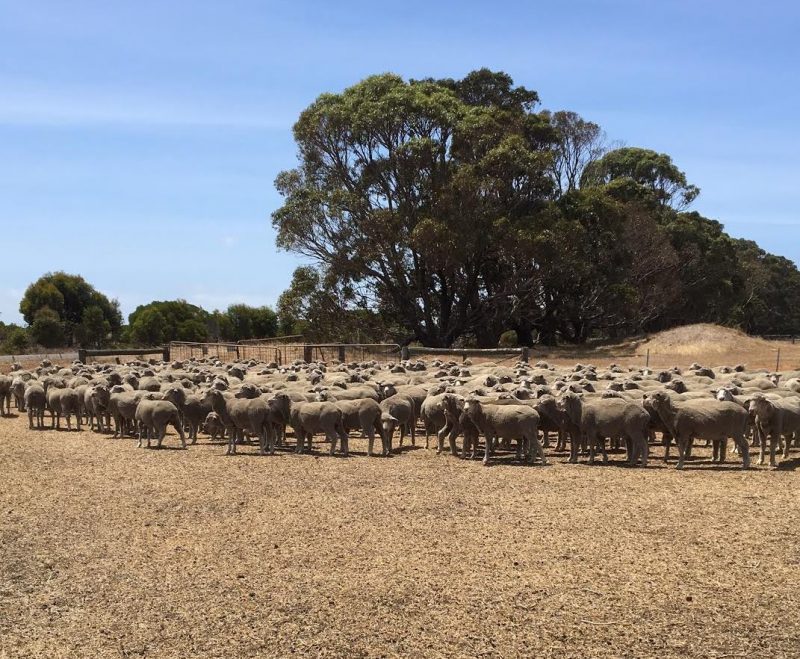Dohnes a Cut Above the Rest
Original article written by Nicola Wood, February 2019. Original photo courtesy of Julie Leenhouwers.
JULIE LEENHOUWERS
BREMER BAY, WESTERN AUSTRALIA
” The Dohne’s ability to produce good quality, bright white wool and withstand tough conditions, continued to impress me.”
TOUGH conditions faced by farmers in Bremer Bay, Western Australia, have proven the durability of Dohnes to commercial sheep breeder and wool classer, Julie Leenhouwers, seeing wool results exceed expectations.
‘Cardiminup’, sits on approximately 2800 acres right on the coast of Bremer Bay between Albany and Esperance and generally experiences high rainfall with the last couple of years seeing drier, more challenging conditions.
“We’ve always run sheep, it’s great sheep country down here. We’ve got lighter soils and generally good rainfall so we get pretty good cover all year round,” said Ms Leenhouwers.
Ms Leenhouwers and her partner Greg Lee run 1970 Dohne ewes all up, joining the older ewes (generally 600 to 700 a year) to crossbreds with the other 1000 to 1200 going to Dohne rams along with some Merino rams.
“My partner and I lease the farm from my father whilst he still farms in other areas. We used to run a big feedlot here, running 8000 head of cattle a year. On top of the feedlot we always ran sheep but eventually got out of the feedlot because grain prices were getting too high and the profit margins for buying in good cattle weren’t there,” she said.
As a wool classer by trade, Ms Leenhouwers was first introduced to Dohnes whilst working in the Jerramungup area classing wool. Her interest was sparked; experiencing them to be well-grown, plainbodied sheep with free growing, soft, bright white wool and noticing in particular, less fleece rot and dermatitis. Overall, she was very impressed.
Ms Leenhouwers has now been running Dohnes for 8-10 years, previously just buying and selling as a trading operation. She said, “We ended up with a really good deal from friends who sold out, so were able to purchase fine wool Merino ewes and put Dohne rams over them, aiming to achieve some more body frame but still keeping within our micron range of 18 or under.”
Regardless of the testing conditions, Ms Leenhouwers is benefitting from a successful 2 years of an 8 to 10 month shearing period. “We’re still getting a good wool length of 70mm. The wool has a
high tensile strength and the sheep have been generally doing a lot better. The first and second cross in the Dohne compared to Merino I’ve found are really the best sheep,” she said.
Shearing just before the dry in February 2018 then again in November 2018, the results are proof enough of what the Dohne can withstand. Averaging 1206 cents per kilogram for their February shearing then 1292 cents per kilogram for their November shearing, Ms Leenhouwers definitely got her money’s worth. “The sheep did amazingly. It was a normal year for us up until sort of April/May and then we never got rain here until mid-July so through a pretty tough time we really benefitted from being able to achieve 8 to 10 month shearing. They weren’t under stress for
lambing and generally gave us great results considering the challenging conditions we were facing.”
Due to the Dohnes’ ability to produce good quality, bright white wool and withstand tough conditions, Ms Leenhouwers is definitely planning to continue benefitting from what the breed provides physically and economically.
“Regardless of the conditions we’ve faced this year and last year the Dohnes have continued to impress and fit well into our program. Generally, the Dohnes are just an easy sheep to run,” she said.

Cardiminup Dohne Ewes.










 Facebook
Facebook YouTube
YouTube Instagram
Instagram